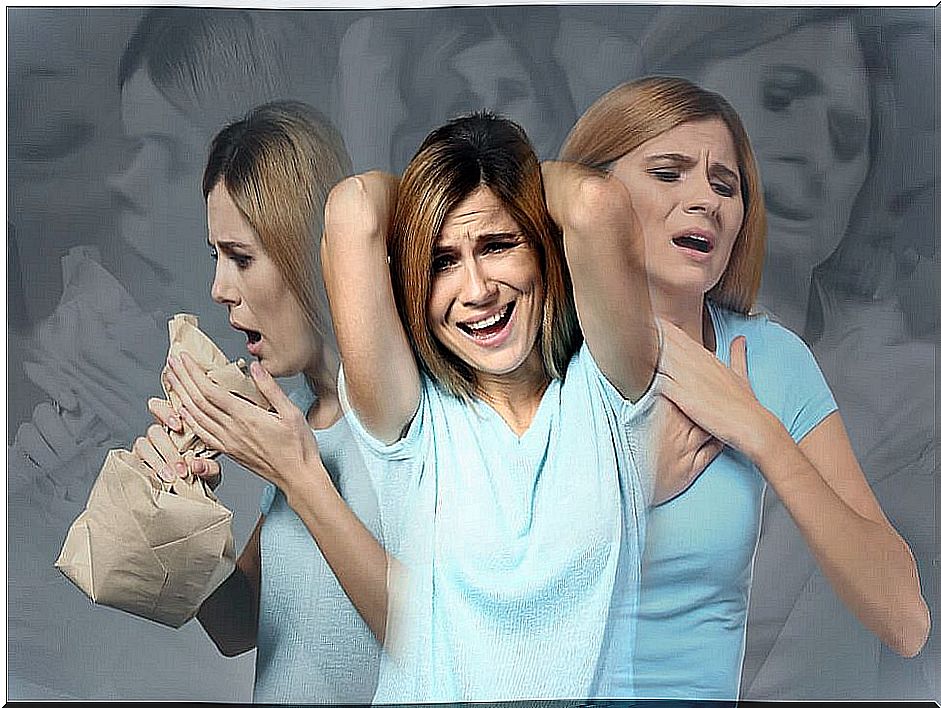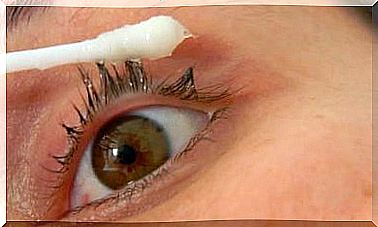5 Mental Illnesses And Their Characteristics
Many times, the symptoms of psychological disorders can be addressed with a psychological or psychiatric treatment, and thus the patient can lead a more or less normal life. Do you know the basic aspects of these pathologies?

Mental or psychological illnesses are disorders that alter the way of thinking and feeling of the affected individual. In addition, these pathologies reduce their ability to relate and remain in a social environment.
In general, mental illnesses have serious impacts on the abilities to cope with the demands of everyday life. In turn, these cause physical weakness and deteriorate the quality of life.
These types of diseases are caused by genetic factors, injuries or environmental circumstances, as indicated in a Mayo Clinic article. They manifest themselves through disorders of reasoning, behavior or the ability to recognize reality and adapt to the conditions of daily life.
Characteristics of the most common mental illnesses
Despite the fact that there are many and of different degrees of severity, below we delve into five of them with their respective characteristics.
1. Depression

A study published by the Encyclopedia of Human Behavior estimates that approximately 17% of people experience an episode of depression at some point in their lives. This disorder affects millions of individuals around the world and sometimes has tragic consequences.
The American Psychiatric Association lists nine symptoms that are linked to depression. If a person has two or more of these symptoms for more than two weeks, they are considered to have this problem:
- Feeling of unhappiness.
- Making movements without purpose or unusual slowness in these or in speech.
- Loss of interest in things that you previously considered important.
- Feeling of weakness and tiredness.
- Lack of sleep or, conversely, constant drowsiness.
- Suicidal thoughts.
- Low self-esteem or feelings of guilt.
- Difficulty concentrating and making decisions.
- Loss of appetite and weight, although there may also be weight gain unrelated to diet.
2. Schizophrenia
Many aspects of this disorder remain a mystery to medicine, in fact, its exact cause is still unknown. However, research published by the Encyclopedia of Mental Health details that it may be due to a complex interaction of genetic and environmental factors.
According to a publication in the MSD Manual, schizophrenia can lead to suicidal thoughts and even trigger attempts to kill oneself. It also causes reluctance to self-care and a deterioration of social relationships, among many other problems.
This pathology generally begins around 20 years of age, and usually lasts a lifetime. Its episodes become so uncontrollable that it is considered a reason for disability. Schizophrenia does require professional care.
The symptoms of this mental condition have been divided into “positive,” “cognitive,” and “negative.” The positives include:
- Hallucinations.
- Irrational beliefs.
- Incoherent thinking and speaking.
For their part, the negatives include:
- Paranoia.
- Social isolation.
- Uncontrollable anxiety
- Abnormal behavior.
- Loss of bodily and emotional expressions.
- Decreased ability to take initiatives.
Ultimately, the cognitive decline that schizophrenia produces is characterized by difficulty remembering, concentrating, organizing, and making decisions.
3. Panic

Panic is a physical manifestation of fear that, in some cases, is mistaken for the symptoms of a heart attack. It occurs in response to a risk situation, but it can also become a disorder when it occurs recurrently.
According to what was explained in a publication in the British Medical Journal , it is commonly a symptom of an anxiety disorder, and about 3% of people in Europe suffer from it annually.
A Mayo Clinic article details that panic attacks usually come on suddenly and last a few minutes, after which you may feel profoundly tired. These are the symptoms that are listed for this mental illness:
- Sweating.
- Nausea and dizziness
- Chest pain.
- Loss of control.
- Body weakness
- Difficulty breathing.
- Tingling in the hands
- Feeling of imminent danger.
- Increased heart rate, tachycardia, or palpitations.
4. Bipolar disorder
Bipolar disorder is a mental illness that causes the individual to go through emotions of extreme joy and then experience very low mood levels, interpersonal relationships, even depressive ones. Also, a study published by the Encyclopedia of Mental Health details that moments of irritability can occur.
Bipolarity affects men and women equally, and usually appears between 15 and 25 years of age. The impact of this disorder is so negative that it causes difficulties in interpersonal relationships and problems at school or work.
A MedlinePlus article details that the manic phase, which can last for days or months, can lead to:
- Lack of sleep.
- Speaks fast.
- Hurried thoughts
- Delusions or false worries.
- Difficulties concentrating.
- Poor discernment ability.
- Difficulties controlling temperament.
- False beliefs about yourself and your abilities.
- Excessive involvement in various activities.
- Lack of self-control in various areas, which in turn can lead to dangerous behavior, excessive spending or the use of harmful substances.
On the other hand, in its depressive phase the following symptoms may occur:
- Social isolation.
- Suicidal thoughts.
- Insomnia or excessive sleep.
- Depressed mood
- Physical and mental weakness.
- Loss of self-esteem.
- Feelings of hopelessness or guilt.
- Difficulty concentrating and making decisions.
- Lack of appetite or too much anxiety about food.
5. Obsessive compulsive disorder

It is one of the best known mental illnesses. It leads the person to have repetitive and undesirable thoughts and behaviors that, in turn, prompts them to do something, which is called compulsion.
As detailed in a study published by Behavioral Neurology and Psychiatry , obsessive compulsive disorder usually begins in childhood or adolescence in the case of men; for women, it usually begins with adulthood. Its incidence is between 1% and 3% of the population.
Failure to comply with their obsessive rituals produces tremendous anxiety, sadness and even suffering in these people. According to an article by the National Institute of Mental Health – National Institute of Mental Health of the United States – those who suffer from OCD usually present these symptoms:
- Excessive count.
- Fear of germs.
- Review and re-review actions.
- Repeating the words in a low voice.
- Extreme concern about your compulsions.
- Compulsion to wash hands excessively.
- Problems doing daily activities.
Mental illness must be treated
Taking all this information into account is useful to detect these mental illnesses in a timely manner. In all cases, their treatments are decisive to reduce the risk of suffering worse outcomes.
For this reason, if you consider that you or someone close to you may suffer from one of these conditions, the most prudent thing to do is to consult a specialist as soon as possible.









